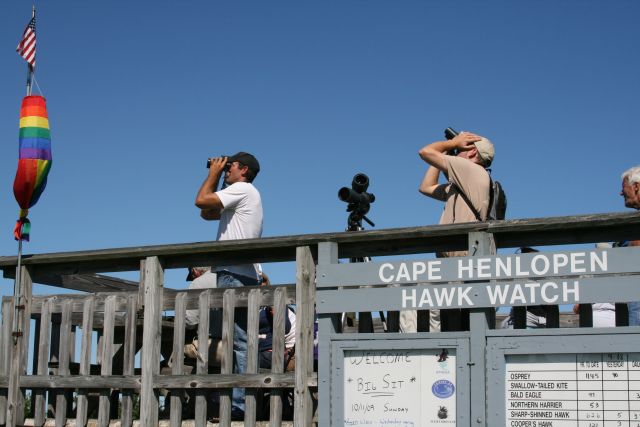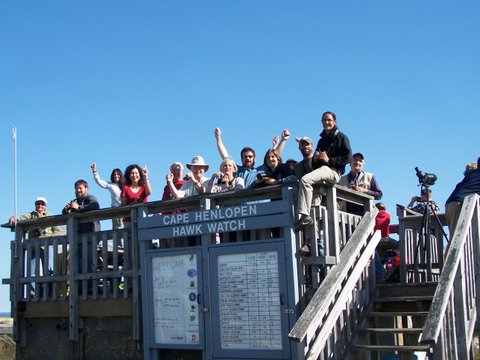Cape Henlopen Hawk Watch
|
See the real raptors!
The Cape Henlopen Hawk Watch (CHHW) operation every Fall (September 1 to November 30). CHHW is organized under the Hawk Migration Association of North America. Volunteers, many of them members of the Sussex County Bird Club, count and report the numbers of passing raptors, including : Red-Tailed Hawks, Red Shouldered Hawks, Broad Winged Hawks, Cooper's Hawks, Sharp Shinned Hawks, Bald and Golden Eagles, Turkey Vultures, Black Vultures, Kestrels, Merlins, and Peregrine Falcons. Now and then something out of the ordinary may appear, such as a Mississippi Kite or a Swallow Tailed Kite. New Feature:: For detailed information about our recent counts, click link below When you reach the Count Reporting Site, scroll down to November 30th.( last day of our annual count), and click on Cape Henlopen. In the Data Summaries Panel : Select Monthly, Choose the Month you wish to view, Click "GO" There is much more information on the site ,but this will get you started! www.hawkcount.org IInterested in volunteering? Please come to the Hawk Watch any day during the hours of operation. Experience is not necessary. Veteran Hawk Watch members will answer any questions you may have, and provide training. There is always a need for an extra pair of eyes, if only to point out a bird and ask "What is that?" New volunteers are always welcome, so come and join the Hawk Watch for as little or as much time as you choose. You do not have to be a "birder" to participate, but you will leave being a birder for life! The Hawk Watch operates under a Fish & Wildlife grant that is contingent in part on the Hawk Watch’s ability to solicit volunteer hours. The Friends supports this group and a number of its members also volunteer their time at The Hawk Watch. We always looking for more people to come learn, enjoy and help. |
Raptor Facts
- Birds of prey include a number of species and are frequently called "Raptors"
- Raptors is Latin for "seize" or "take by force"
- Raptors includes species such as eagles, falcons, vultures, owls and osprey
- Northern hawk owls can detect prey—primarily by sight—up to a half a mile away
- Peregrine falcons dive at more than 200 miles per hour when hunting
- Some hawks migrate more than 6,000 miles - from Canada to Argentina in two months
- A bald eagle nest discovered in Florida was more than 9 feet in diameter and 20 feet high


